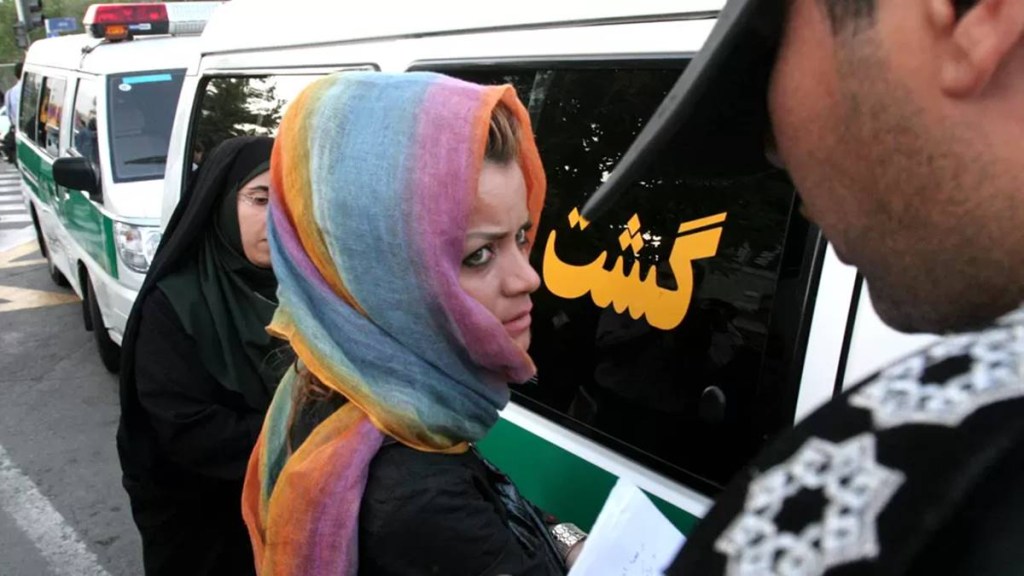By Prabhat Jawla
To preserve the fabric of Iranian society, a compromise is imperative. Yet, the onus for such compromise lies with the government. Measures like the reinstatement of the morality police, regardless of the legality of its disbandment, would only prove detrimental to Iranian society.
Less than a year ago, the Raisi government embarked on a contentious mission, pushing a conservative agenda that struck at the heart of Iranian society—mandatory hijab for women. The hardliners’ coteries that dominate the government and the Parliament (Majles) deemed existing laws insufficient. Hence, they have pushed for more regulations and stricter enforcement of hijab to make it a more rigid practice throughout the country.
The government, non-elected institutions, and the judiciary pushed the agenda. Broadly, it had two dimensions: introducing more intrusive laws with heavier penalties and stricter enforcement. The new legislation authorized fines for violators of the hijab code and granted the government the power to dismiss female employees in case of violations. Further, the provisions included imposing severe penalties, such as depriving women of social rights and access to public services, including public transport, banks, and government offices, for 6-12 months. In addition, the media reports showed that the government turned to technology to spot hijab defaulters through CCTV cameras.
While the protests in Iran brought attention to the battle over mandatory hijab, there was another facet to the issue – the implementation of stricter measures not only concerning the act of wearing hijab but also emphasizing the need for a “good hijab.” And the mainstay of the regime’s efforts in ensuring strict enforcement was emboldening the morality police—a force notorious for its intrusive surveillance and use of violence to instill fear among the masses. The free hand that the regime gave to the morality police manifested in incidents of violence that went viral because of their horrific and brutal nature. And, the breaking point came with the custodial death of 22-year-old Mahsa Amini.
The consequences of the hardliner agenda and actions of the morality police were far-reaching, setting the whole country ablaze with protests sweeping across segments and major cities of Iran. While ostensibly centered around the morality police and hijab laws, these demonstrations often amalgamated broader demands for women’s rights, minority rights, and social justice. Underlying these protests were also strong anti-regime sentiments fueled by economic hardship, diplomatic failures, and growing discontent over government spending in foreign lands, while the needs of the local populace remained unmet.
The regime’s response to the protests and brutality of the morality police was ambiguous and sometimes contradictory. Under pressure to disband the morality police, the government was in a precarious position. The choices were stark: face the ire of hardliners by disbanding the force or risk legitimizing the anti-regime protests by refusing to do so. However, the regime chose a creative solution: institutions involved with the morality police distanced themselves without explicitly disbanding it. Meanwhile, the lack of official disbandment was misconstrued by many Western and even Indian analysts as its disbandment, who clearly failed to grasp the nuanced reality of the situation.
In some way or other, the protests have continued ever since, although varying in frequency and intensity. In response to the growing unrest, the government took significant measures, including purges, and jailing of protestors, while also making peace offerings and granting mass amnesties to protestors. Notably, Supreme Leader Ali Khamenei recognized the varying perspectives on the hijab, noting that some Iranian women fervently adhere to hijab while others may not, but they all are supporters of the Islamic Revolution. This signaled a significant shift in Iran’s social landscape where for the first time, the once non-negotiable hijab issue seemed open for discussion. Yet, this all came undone when reports of morality police returning to the streets emerged. The re-emergence of this force reignited the protests, unleashing a fresh spiral of chaos and unrest.
Ultimately, the protests that swept through Iran left a trail of deep divisions, with public sentiments escalating to a point where common clerics faced outright insults on the streets. In response, the government resorted to violent measures, attempting to suppress the protests and widespread arson that engulfed major cities. The aftermath of these protests has undoubtedly transformed Iran, but whether this change will yield positive or negative outcomes remains uncertain.
What is evident, however, is that Iran’s landscape is unlikely to return to its old ways. New dynamics have been set in motion, redefining and restructuring the intricate relationship between the regime and the government. To preserve the fabric of Iranian society, a compromise is imperative. Yet, the onus for such compromise lies with the government. Measures like the reinstatement of the morality police, regardless of the legality of its disbandment, would only prove detrimental to Iranian society.
The author is Doctoral Candidate, Centre for West Asian Studies, Jawaharlal Nehru University, New Delhi, India.
Disclaimer: Views expressed are personal and do not reflect the official position or policy of Financial Express Online. Reproducing this content without permission is prohibited.

